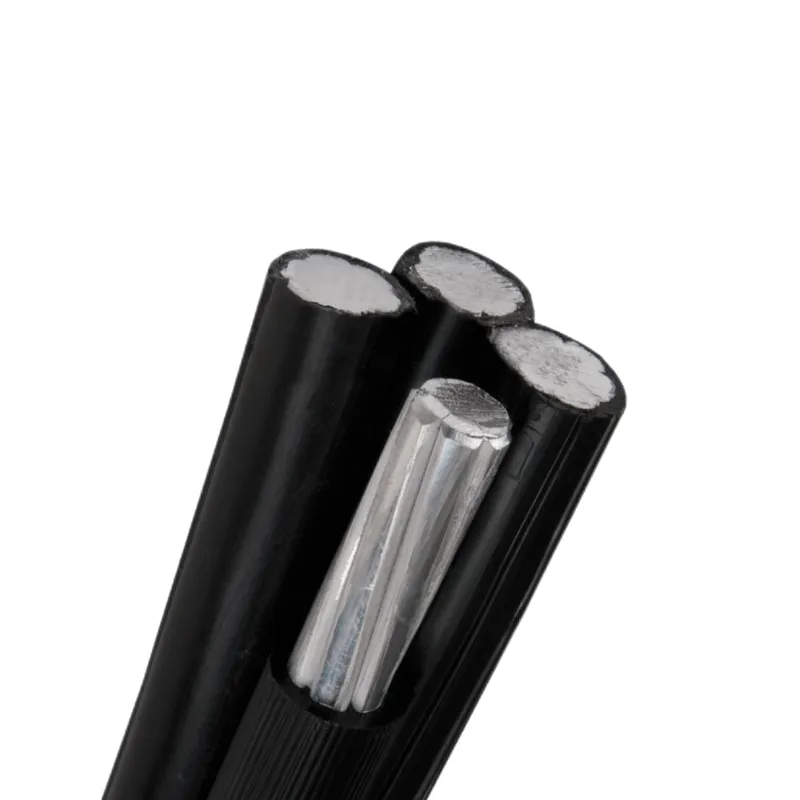Time: 2025-04-16 16:19:25 Source: Henan Province Jianyun Cable Co., Ltd.
Overhead power lines typically use specialized conductors rather than standard insulated wires, as insulation is often unnecessary due to the air gap providing natural insulation between lines. The most common types of conductors for overhead applications are designed for high strength, good conductivity, and durability against environmental factors like wind, rain, and UV exposure. Here are the primary types:
| Type | Description | Common Use |
|---|---|---|
| ACSR (Aluminum Conductor Steel Reinforced) | Aluminum strands around a steel core for strength | High-voltage transmission and distribution lines |
| AAC (All Aluminum Conductor) | Entirely aluminum, high conductivity but less strength | Short-span distribution lines in urban areas |
| AAAC (All Aluminum Alloy Conductor) | Aluminum alloy for better strength than AAC | Distribution lines in corrosive environments |
| ACAR (Aluminum Conductor Alloy Reinforced) | Aluminum with an aluminum alloy core | Transmission lines needing high conductivity |
ACSR is the most widely used due to its balance of strength and conductivity, making it ideal for long spans. These conductors are typically bare, relying on the air to insulate them, though insulated cables may be used in specific cases, such as in urban areas to prevent accidental contact. Overhead wires are like the sturdy ropes of a suspension bridge, designed to carry heavy loads over long distances without breaking.

The term "cable overhead work" generally refers to the installation, maintenance, and operation of overhead power lines and their associated infrastructure, such as poles, towers, and insulators. It involves the physical and technical tasks required to ensure overhead cables can transmit electricity efficiently and safely.
Overhead cable work also involves safety measures, such as using protective equipment and ensuring proper clearances to avoid contact with trees or buildings. It’s like maintaining a tightrope for a circus act—every detail must be perfect to ensure a safe and steady performance.
An overhead line conductor is the metallic component of an overhead power line that carries electrical current from one point to another, typically suspended between utility poles or transmission towers. These conductors are usually made of materials like aluminum or copper due to their excellent conductivity, with designs that prioritize strength, weight, and environmental resistance.
The most common overhead line conductor is the ACSR (Aluminum Conductor Steel Reinforced), which consists of aluminum strands wrapped around a steel core. The aluminum provides high conductivity, while the steel adds tensile strength to support long spans and resist sagging. Other types, like AAC (All Aluminum Conductor) or AAAC (All Aluminum Alloy Conductor), are used in specific scenarios where corrosion resistance or lighter weight is prioritized.
| Conductor Type | Material Composition | Key Feature |
|---|---|---|
| ACSR | Aluminum with steel core | High strength for long spans |
| AAC | All aluminum | High conductivity, lightweight |
| AAAC | Aluminum alloy | Better corrosion resistance |
Overhead line conductors are typically bare, relying on air as an insulator, and are supported by insulators attached to poles or towers. They’re like the veins of the electrical grid, channeling energy across cities and countryside to power our lives.
The voltage of overhead cables varies depending on their role in the power system—whether they’re used for transmission, sub-transmission, or distribution. Here’s a breakdown of typical voltage levels:
| Type | Voltage Range | Typical Application |
|---|---|---|
| Transmission Lines | 69 kV to 765 kV | Long-distance power transfer from plants to substations |
| Sub-Transmission Lines | 33 kV to 69 kV | Regional distribution to local substations |
| Distribution Lines | 4 kV to 33 kV | Delivering power to neighborhoods or businesses |
| Low Voltage Lines | 120V to 600V | Final delivery to homes (e.g., 120/240V in the US) |
High-voltage transmission lines, often at 138 kV or 230 kV, use ACSR conductors to minimize energy loss over long distances. Distribution lines closer to homes might operate at 11 kV or 33 kV, stepping down to 120/240 volts for residential use via transformers. The voltage level determines the conductor size and spacing—higher voltages require greater clearance to prevent arcing. Overhead cables carry voltages like the gears of a car, shifting from high to low to match the journey from power plant to your home.
Overhead power systems rely on specialized conductors like ACSR, AAC, and AAAC, which are designed for strength, conductivity, and durability in harsh environments. Cable overhead work encompasses the installation, maintenance, and operation of these lines, ensuring reliable power delivery. Overhead line conductors, typically bare, carry current across poles or towers, operating at voltages ranging from 120 volts for local distribution to 765 kV for long-distance transmission. Understanding these elements highlights the engineering behind the power lines that keep our world electrified.
Word count: ~800 words
(Note: This article is based on general electrical knowledge. For specific installations, consult a professional electrician and follow local codes.)